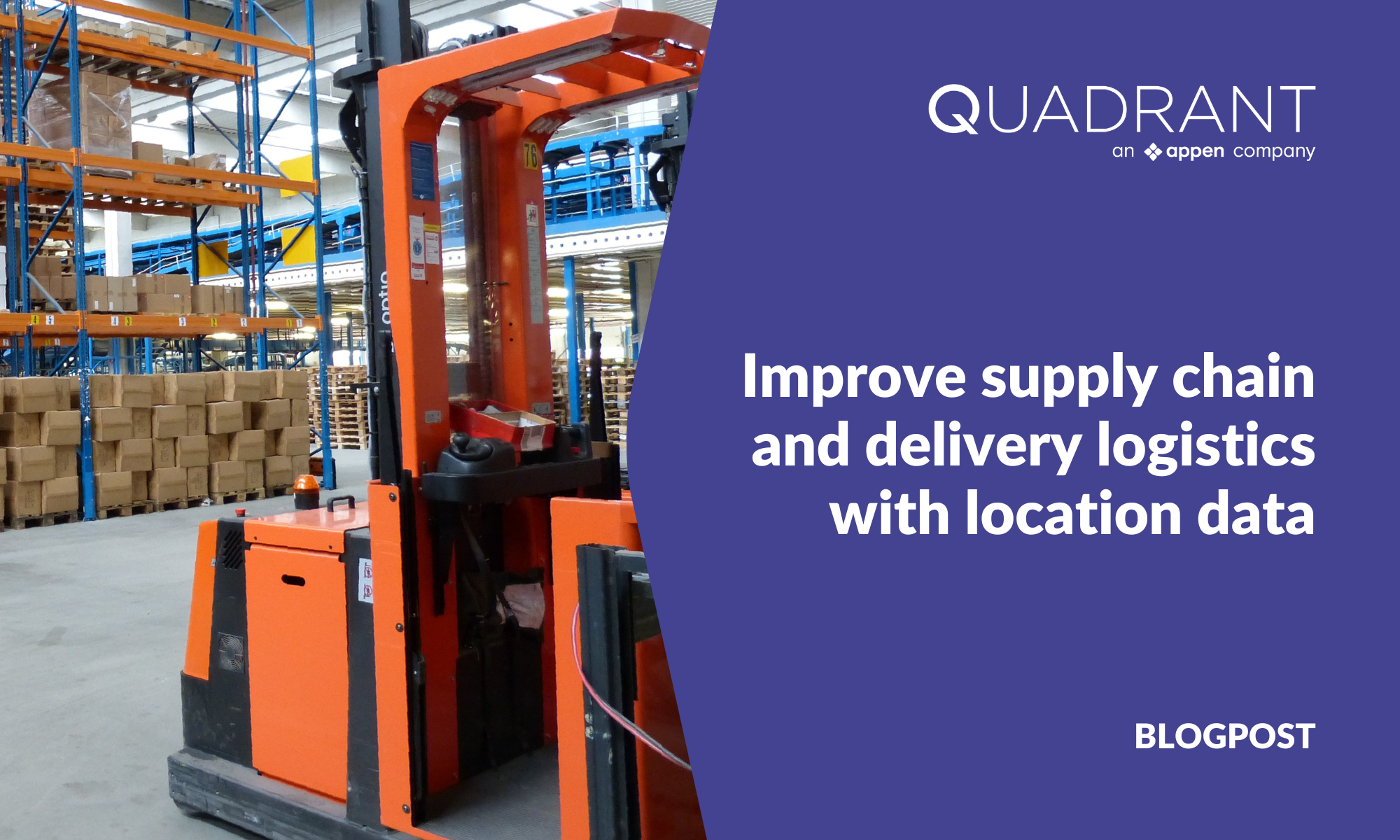Businesses across a host of industries (such as retail and FMCG) strive to improve supply chain efficiency to cut costs, meet customer demand, and increase profits. This article explores how geospatial data (mobile location and Point-of-Interest data) is a valuable tool for enabling these objectives and can be leveraged to support profitable decision-making in supply chain and delivery logistics. 
Reducing fuel consumption
Excessive fuel consumption is a big concern for logistics and delivery managers. Inefficient routing and navigation systems powered by outdated POI data recommend longer routes, lead delivery personnel to incorrect locations, and generate inaccurate ETAs. As a result, businesses lose time, expend excessive fuel, and erode customer satisfaction due to botched deliveries and unreliable shipping updates.
High-quality POI data is crucial for well-optimized navigation systems. When businesses accurately map out their supply chain by pinpointing key locations such as warehouses, distribution centers, and other critical sites (weighing stations, gas stations, etc.), they can optimize navigation systems, streamline operations, cut costs, and increase satisfaction for both their customers and workers.
Maximizing space utilization
Mobile location data allows firms to produce granular insights on their facilities – which, in turn, can be leveraged to improve their operations. By analyzing historical location data, facility managers can identify movement patterns and make data-driven decisions to improve the layout of the warehouse, adjust staffing levels, and optimize resource allocation. Mobility data can also be used to generate density heat maps to identify congested and underutilized areas within warehouses – information that can play a crucial role in rectifying operational bottlenecks caused by poor utilization of space.
Managing and optimizing fleet performance
To enhance customer satisfaction and overcome operational challenges caused by inaccurate and incomplete maps, fleet managers require reliable Point-of-Interest (POI) data. Verified POI data helps fleet managers plan efficient routes, improve navigation platforms, and increase workforce productivity by ensuring accurate addresses, directions, and parking availability. It provides an accurate reference of the various facilities involved in the supply chain, enabling fleet managers to track vehicles, plan efficient routes, and keep mapping and navigation apps up-to-date.
Data-driven site selection
POI and historical mobility information can help businesses evaluate their supply chain efficiency. Relocating or expanding distribution centers closer to areas with higher demand, shorter routes, and proximity to raw materials can reduce costs and increase revenues. POI data can also reveal the position of suppliers in relation to a company's operations, allowing supply chain managers to choose suppliers closer to their warehouses or distribution hubs to save on transportation costs and speed up delivery times.
Using footfall data to improve inventory management
Businesses can analyze footfall data to determine consumer activity at various scales and manage their inventory in real-time – without having to wait for monthly or quarterly sales information. For example, increased footfall at certain outlets shows firms that they need to increase inventory allocation for specific stores to match increased consumer demand. Similarly, if they notice decreased footfall at certain POSs, they can order less inventory to avoid wasting resources. Location intelligence gives supply chain managers the ability to adapt to evolving customer demand and devise effective fulfillment plans.
USE CASE: How firms optimize logistics and warehouse performance
One of our clients, a large industrial and retail supply chain company, uses raw location data to determine how efficiently items are moved between different buildings within their premises. They utilize mobility data to create models that track the logistical relationships between buildings within a single site and with consumers across the geographies they are operating in.
This project required scanning over 20 billion rows of data per month, looking at hundreds of device identification codes, some within considerably smaller geofences. Data scientists identified devices originating at the distribution centers and observed them over a period to gather insights about how they move, the average distance traveled, and more. By estimating the relationship between the different POIs, the customer could identify previously unknown client-supplier relationships and reveal actionable insights for nurturing partnerships that aid growth, operational efficiency, and profitability.
Geospatial data is a valuable resource for companies looking to improve their supply chain operations. The use of mobile location data and Point-of-Interest (POI) data can lead to cost savings, enhanced productivity, better decision-making, and improved customer satisfaction. By optimizing routing systems, monitoring operations, and making data-driven decisions to improve procurement and fulfillment systems, businesses can streamline their supply chain networks, increase profitability, and gain a competitive advantage.




